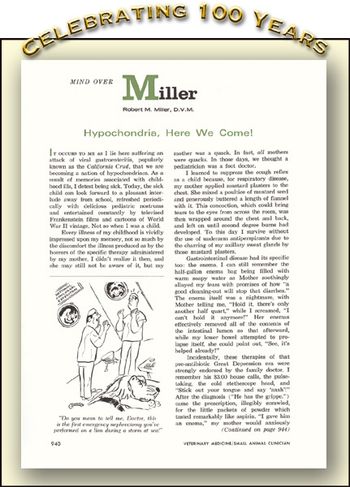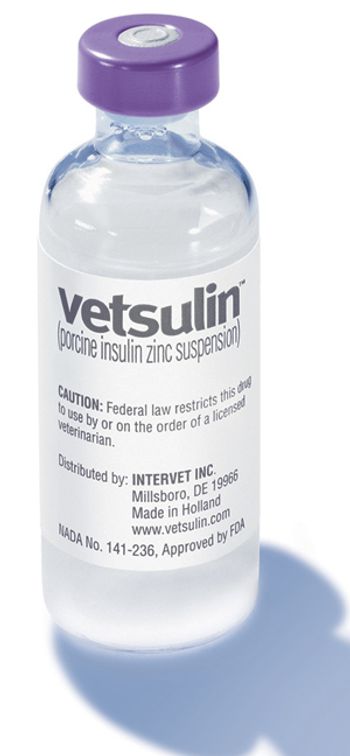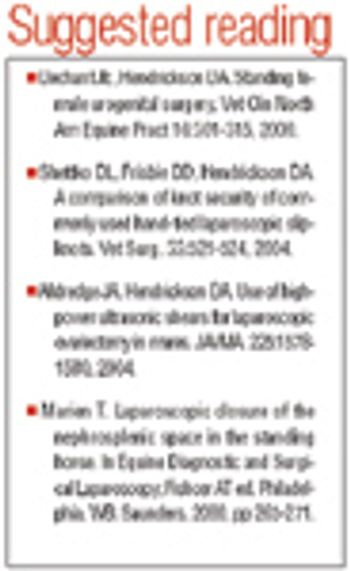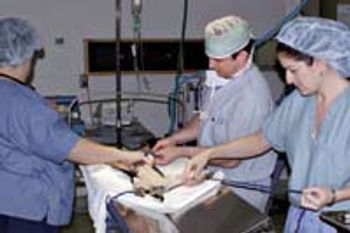
Hopefully you have accepted a position that recognizes the gap between education and practice.

Hopefully you have accepted a position that recognizes the gap between education and practice.

Cleveland - Clients judge a book by its cover. There's no way to get around it, especially when it comes to students and new graduates.

WASHINGTON —Veterinary leaders commend President Bush's call to enact association health plans (AHP) during his State of the Union speech Feb. 2, citing national policies as a means of insurance savings for small business owners.

It occurs to me as I lie here suffering an attack of viral gastroenteritis, popularly known as the California crud, that we are becoming a nation of hypochondriacs.

Pedigree Perfection introduces Paw Tectors, waterproof boots that protect dogs from moisture while outside, and keep their feet clean from all elements and hazards, the company says.

Millsboro, Del. — Intervet's Vetsulin (porcine insulin zinc suspension) is the first and only insulin approved by the U.S. Food and Drug Administration to manage canine diabetes.

ST. LOUIS — Veterinary product sales are expected to fall slightly in the first quarter of 2005 compared to the fourth quarter of 2004, but overall demand remains strong, according to the Animal Health Price & Demand Economic Report, a compilation by C.F. Grass Consulting.

Innotek introduces Zones, a dog-training device that is placed under furniture, on a wall, counter or area indoors that pets are not wanted.

Kodak introduces computed radiography (CR) systems and other medical imaging solutions specifically to meet the needs of veterinarians.

KANSAS CITY — Model practice act standards embracing chiropractic and physical therapies likely will make the American Association of Veterinary State Boards (AAVSB) agenda during the group's annual September conference.

SOUTHEAST ASIA — Veterinarians who traveled to Asia to help with disaster relief from December's tsunami now are combating a new problem as the Sri Lankan military threatens to eradicate thousands of dogs if rabies emerges.

Milwaukee — Midwest Airlines announced a new program that will give pets a free round-trip ticket for every three domestic round-trip flights they take with their owners.

Is there a leader you'd like us to interview? Perhaps an admired teacher, mentor, or colleague?

The least expensive alternative for ovarian ligation is a hand-tied ligating loop.

SACRAMENTO, CALIF.— In an effort to streamline state government, Gov. Arnold Schwarzenegger is threatening the state's 88 independent regulatory agencies with consolidation — a move that would eliminate the California Veterinary Medical Board (CVMB).

The IgM-capture ELISA is considered the most reliable test for confirmation of recent exposure to West Nile Virus.

VMAC members were asked to answer two key scientific questions.

Vitality Systems introduces two medicated shampoos for dogs and cats, Oxiderm and Medicated Shampoo.

How do you tell a 400-pound owner that his or her dog is too fat?

COLUMBUS, OHIO — Although pediatric sterilization is not performed in most general practices, many veterinarians say shelter environments are the most plausible venue for the procedure.

Veterinary Pet Insurance introduces a new booklet, the VPI Resource and the VPI Reference Series to provide professionals a comprehensive analysis of VPI Pet Insurance policies, procedural guidelines and literature on the current thinking in specific areas of clinical medicine.

ROME, GA. — James A. Jarrett, executive vice president of the American Association of Bovine Practitioners (AABP), died at age 69 following a long battle with cancer.

Vetland Medical introduces the Landmark Large Animal Anesthesia System powered by Drager.

The article "The efficacy of an acidified sodium chlorite solution to treat canine Pseudomonas aeruginosa otitis externa" in the January 2005 issue, the cleanser evaluated in the study was misidentified as Sanova (Alcide Corporation), an FDA-approved antimicrobial used in food processing.

Using reproductively normal donor mares and stallions of known, good fertility, an embryo can be recovered approximately 70 percent of the time.

Spectrum Surgical Instruments introduces HighGold' scissors.

The article published by Strauss et al. in the January 2005 edition of Veterinary Medicine refers to the use of a product-trade name Sanova-for the treatment of otitis externa infections in dogs caused by Pseudomonas aeruginosa.

"I agree with the procedure in a shelter situation because a lot of people who adopt will not get around to having the animal sterilized. For my clients, I recommend waiting until the animal is 5-6 months old — they handle the anesthesia better, and there is some indication of female incontinence later in life if you spay very early."

SurgiVet introduces Pure-Guard, a passive gas evacuation system that offers veterinarians and their staff enhanced protection from dangerous waste anesthetic gases in the clinic.

IDEXX introduces VetStat Electrolyte and Blood Gas Analyzer, the first in-house blood gas analyzer modified specifically for veterinarians.